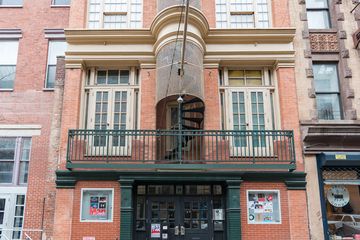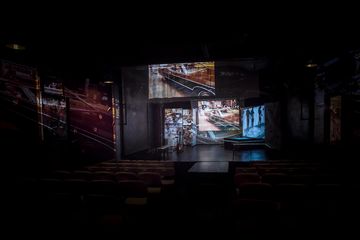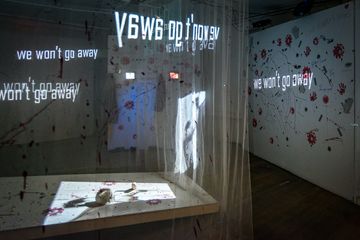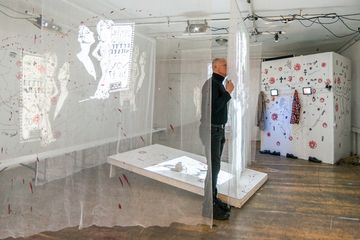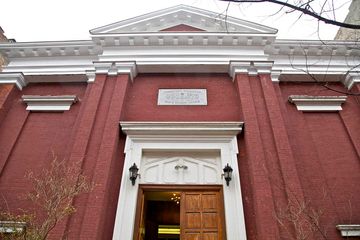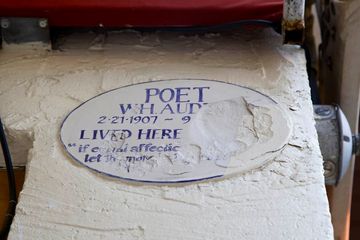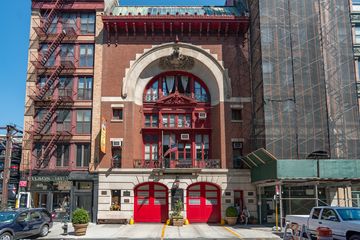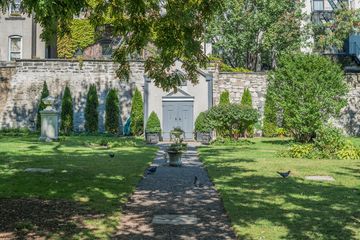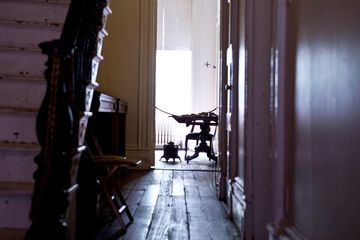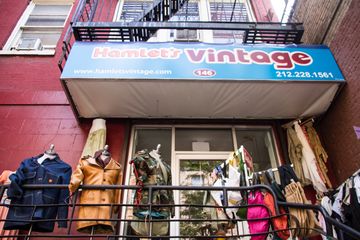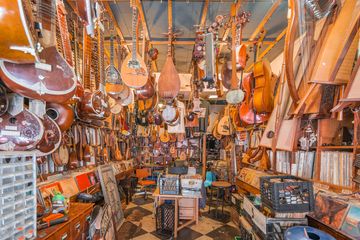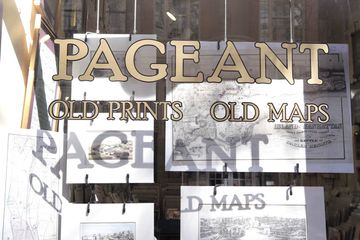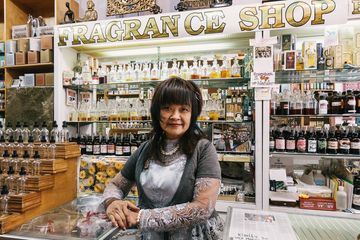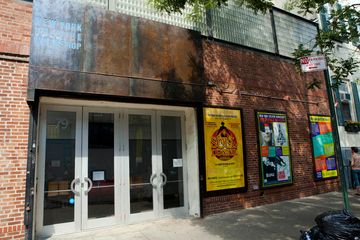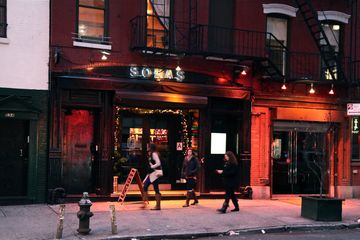So what exactly is Howl! Happening? I asked Jane Fried and Ted Riederer, Howl! ’s Executive Director and Artistic Director, respectively. After a few seconds of pondering, Jane responded, “A very eclectic, very fluid art gallery. ” “Maybe a performance space, ” suggested Ted. Jane shook her head definitively. “No, I think of it as an art gallery. But it has its own form of expression. ”While Jane, Ted, and their colleagues at Howl! Happening are certainly in the business of innovation (the exhibition that was up during my visit featured a guitar-sized music box and melodious contraption made of two bicycle wheels, among other things) there are many ways in which they also aim to preserve. Jane grew up in the West Village. As someone who was involved in all sorts of art, from theater to music and fine arts, she was a firsthand witness to the rise, from the ground up, of a unique, inclusive, artistic population across the island - the East Village. As a traditionally inexpensive and diverse neighborhood of Manhattan, East Village was known as a haven for innovative personalities. “Most of the artists down here had experimental, avant garde ideas, and many of those ideas were shunned or laughed at by communities outside of this one, ” Jane recounted. “But this place was very nurturing, and I think it gave a lot of people the chance to express themselves. They could hone their art, and others would understand their art and what they were trying to say. For fifty years, this was the place where anybody from anywhere came to nurture themselves - to feel accepted and special. ”In the past few years, however, Jane has seen rising rent prices, the artist’s eternal bane, impact the East Village in a devastating way. “If you weren’t well-moneyed, you would have to move somewhere, ” she said. “It was horrible. ” The East Village, much like any given Manhattan neighborhood, has become a jungle of high-rises and sleek boutiques, with its tight-knit artistic community shoved out to Brooklyn, New Jersey, and even farther. Most of the old galleries and performance spaces have also been bought out, meaning that it has become very difficult for artists to thrive. “There’s a huge lack of opportunities for people to perform shows and experiment, ” said Ted. “And that’s what really used to nurture the East Village - these clubs and performance spaces. ” Jane and Ted are pushing against this trajectory, doing their best to make sure the traditional East Village culture is not lost forever. Jane’s ultimate goal is to create an East Village art museum that features the artists who made their careers in a place where they can no longer afford to live. While she still has not found the perfect space for the museum itself, she founded Howl! Happening in 2015 as the first step in this project. The gallery exhibits artists who embody the East Village. “We are here to provide space for whoever is left, ” Jane proudly told me. “Not just physically left in this neighborhood, but left in its art world, to show their work and be remembered, not to lose their history, their importance, or their relevance. ”In fact, in keeping with their vision, to date, the gallery has never turned down a local artist interested in exhibiting their work, in any medium from painting to theatrical performance. In addition, the team at Howl! assist area artists in more “practical” ways, through affordable housing workshops and close work with The Actors’ Fund, which helps performing artists pay for everything from housing to health care. While preserving the past in such a fast-moving city may seem like a daunting task, it is clear that Howl! Happening has many passionate followers behind its cause. Every day, Howl! receives visits from patrons looking for a glimpse of history. “A lot of people come to see the old haunting grounds, ” Ted joked. “Yesterday we had a couple of older punk rockers from Denmark who were walking around the neighborhood to see where the Ramones used to live and CBGB, and they stumbled in here. ” With the old spaces long-gone, Howl! is here to scoop up their would-be patrons. As Ted put it, “It’s like we put out the call and people responded. ”And the patrons stay. In its short life, Howl! has already been adopted as a community space. “It’s a comfortable atmosphere, ” said Jane. “And we don’t charge to get in. By the end of the afternoon we might have a whole table full of neighborhood artists…it makes you want to get more and more involved. You don’t just walk past a piece of art and say ‘Oh, that’s really nice’ and keep going. You really want to know about the artist. You get excited if the artist happens to be here. There’s a pretense with the bigger commercial galleries that excludes this sort of community vibe. ”While Howl! Happening is doing its part to keep the eclectic East Village culture alive, the public, particularly the next generation, will have to play a role as well. Ted spoke fondly of a show on drag culture, where a young drag queen in the audience was so inspired that he got up on the stage and performed himself. The young artists of today will dictate the culture of tomorrow. “They might not be able to live in the East Village, ” Ted laughed, “but they can take the train in from Ridgewood and Bushwick. ”It’s a tough mission, but a noble one. Jane put her work succinctly: “You open the door, you put on the lights, and then you hope people come in. ”


